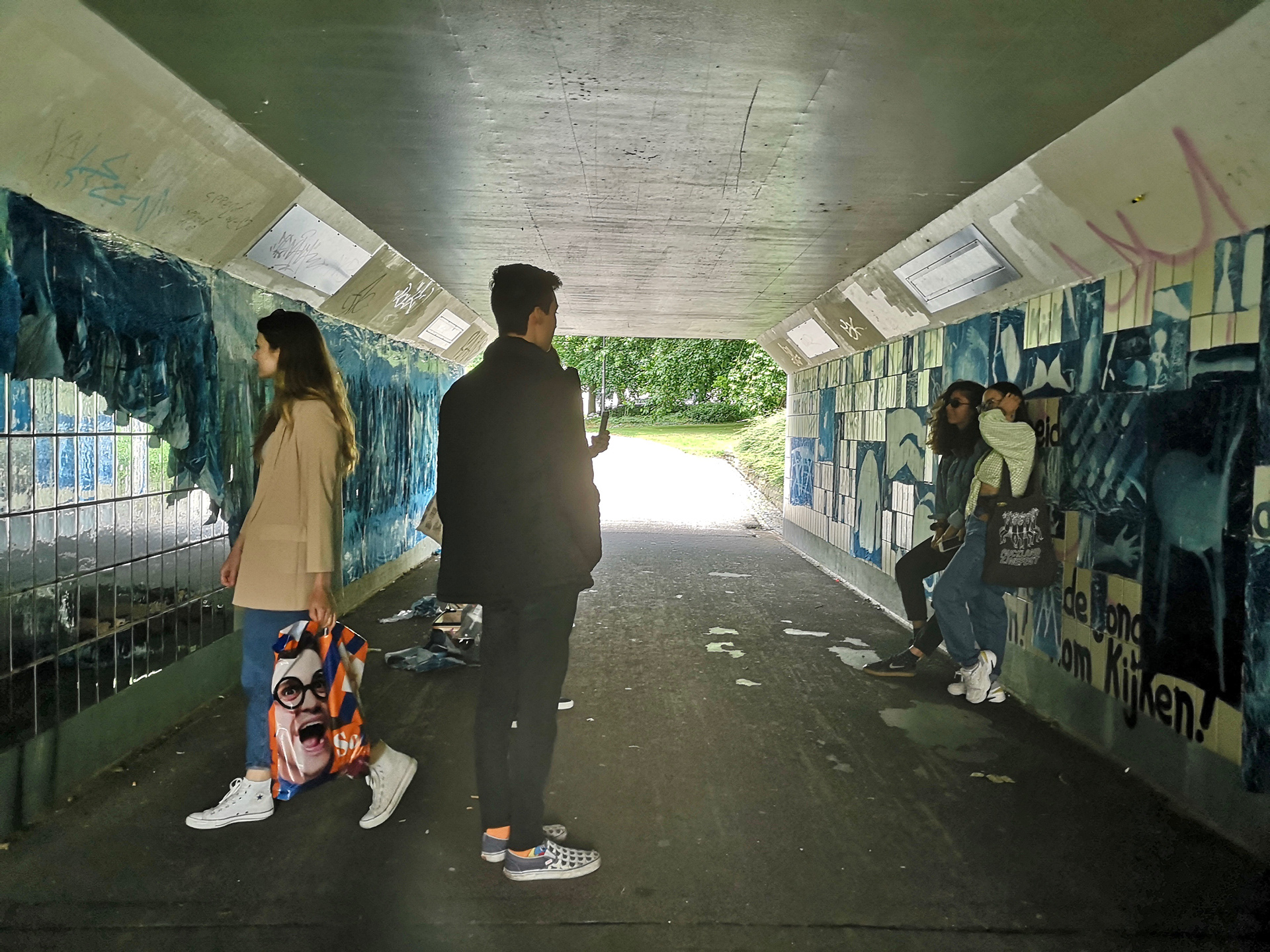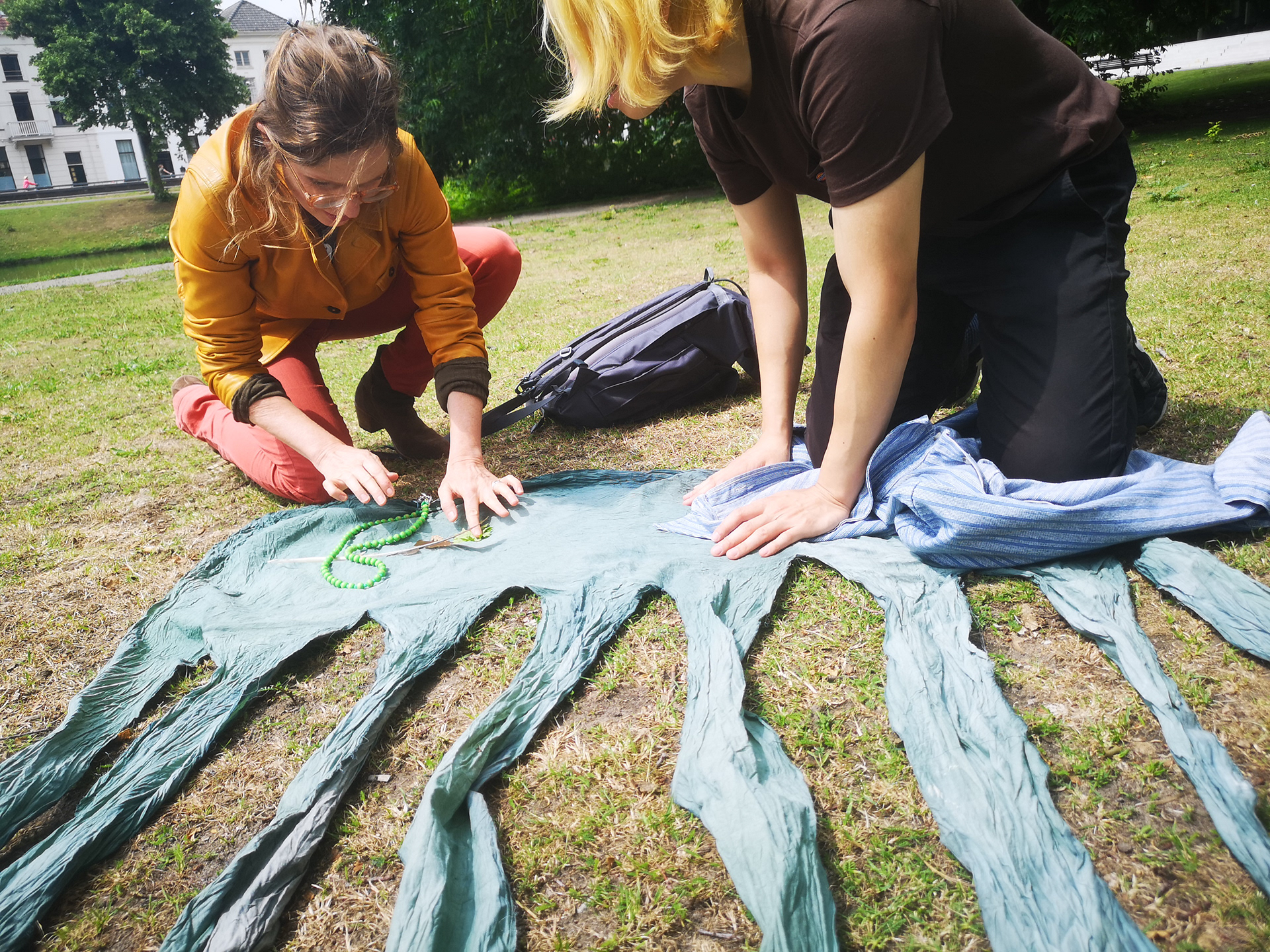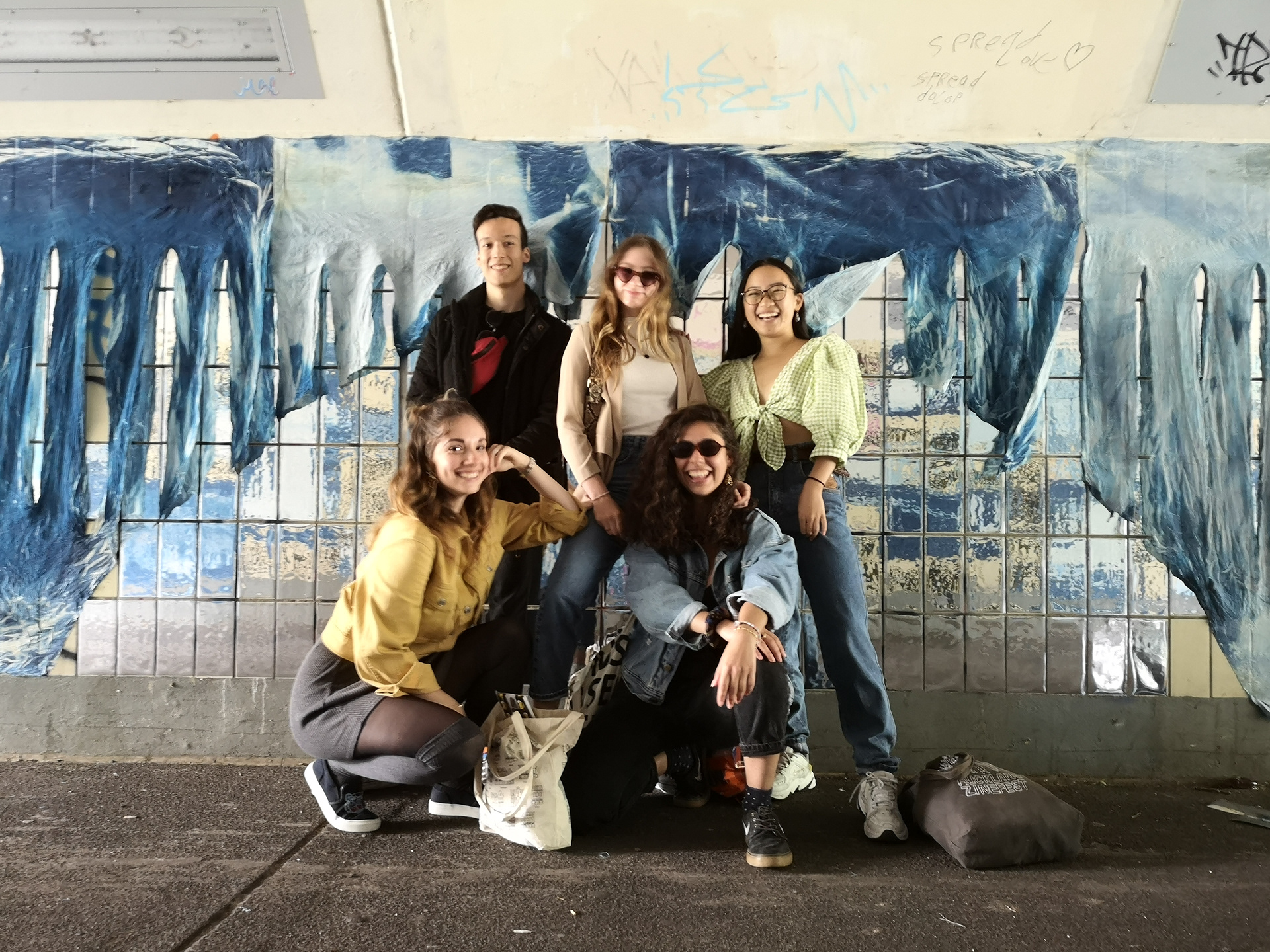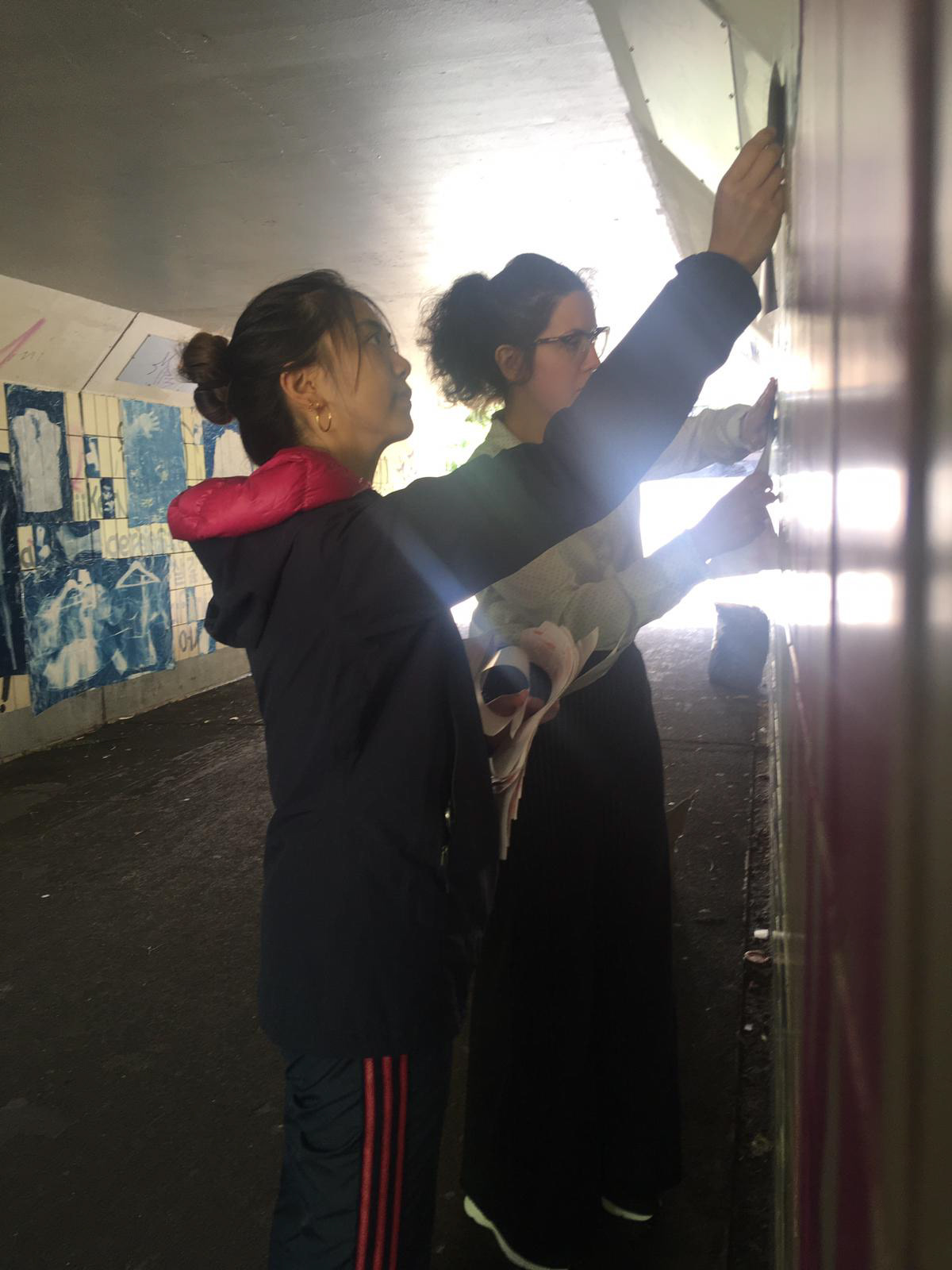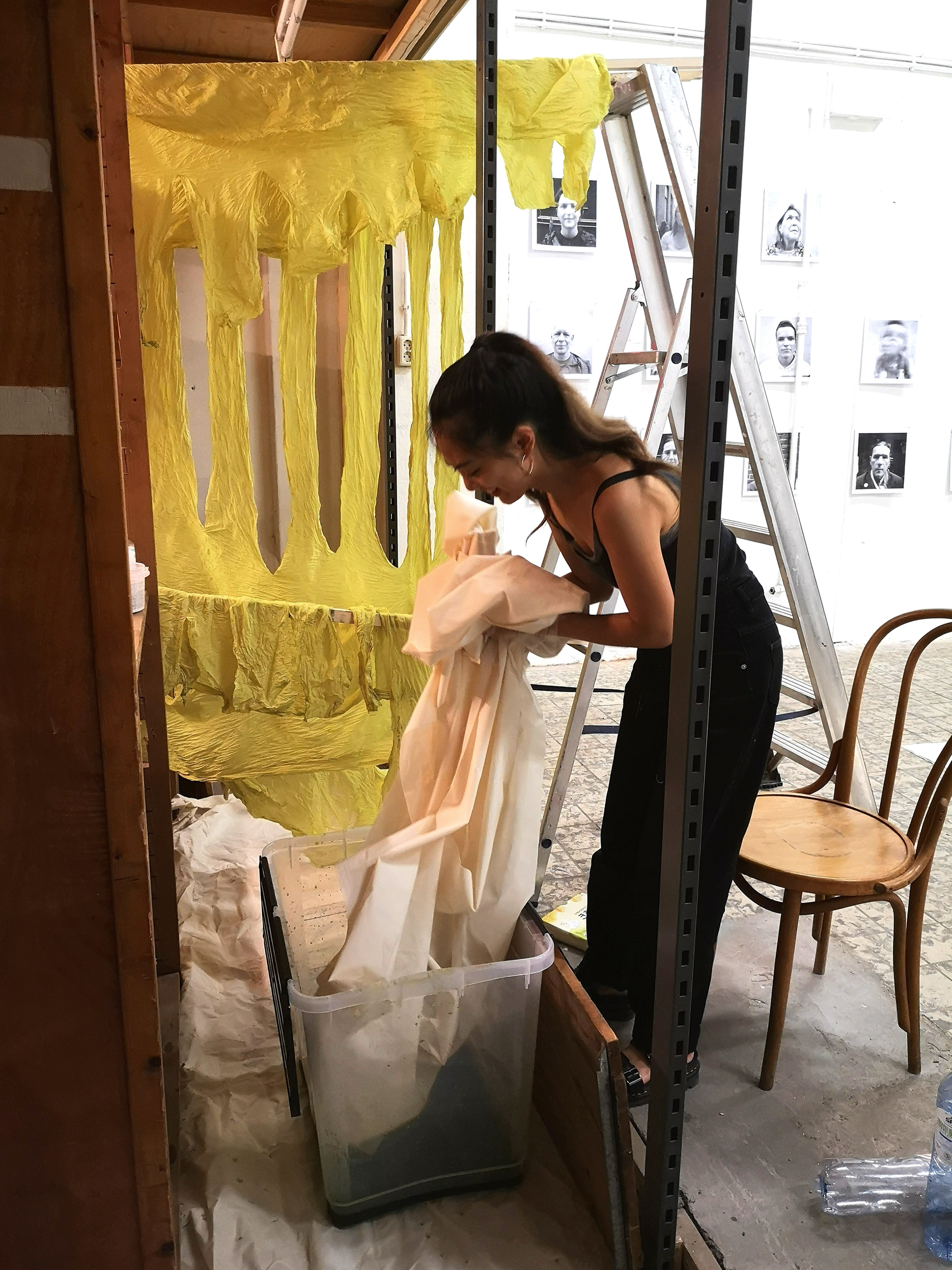This work is making murals about WW2. The project ran between Feb and May 2020 with three different artists and a professor John Johnston. The concept pf ‘Shadowlands’ focuses on the notion that all memory is a mere refection of a past reality. Drawing on subject matter related to the homelands of each of the artists, who come from the Netherlands, Ireland, Japan and Korea, the work will explore this concept from the following perspectives:
1. The Dutch perspective (Arnhem)
2. The Irish perspective (Derry)
3. The Japanese perspective (Nagasaki & Hiroshima)
4. The Korean Perspective
2. The Irish perspective (Derry)
3. The Japanese perspective (Nagasaki & Hiroshima)
4. The Korean Perspective
Shadowlands endeavours to reflect on the words of many of the veterans of the battle of Arnhem who said they come
In our research during Borderlands many children and others highlighted the importance of remembering war but only if we use this memory to learn how to live in peace and hence prevent wars in the future. The message is clear – history is extremely important and its I vital to remember and learn from its lessons.
The central questions that Borderlands raised are extremely important; Why and how do we create collective memories that represent a narrative of history that may actually perpetuate difference and lead to further conflicts through time?
Shadowlands begins by reflections on such questions and looks at the residue of conflict some that have taken place since the end of WWII. The project also suggests that memory is not a solid entity and therefore nor is it captured in time – as we so often see in public memorials and commemoration events.
In Shadowlands the concept of memory evolves from traces of the past toward the present and future as the shadows weaken and eventually disappear from view allowing new horizons appear. These new horizons draw on the words and images of children who dare to imagine a new future where the world’s peoples’ live in harmony with nature and each other. It is aspiration a dream that is immortalised in the words of Dr King’s speech on the grounds of the Capital Hill Washington on August 23rd 1963 – words that have been reflected or traced from and by other great leaders who dared to promote nonviolence as a response to difference and conflict a direct opposition to the war.
This positive message comes from the children and the adults who informed Borderlands. The message will be interpreted in a semi- abstract form and will move from reflections on the past toward projections of possible futures.
The works are intended to ephemeral in form and semi-permanent. To achieve this the artists will work on muslin cloth. Muslin is an ancient fabric that has many spiritual connotations that cut across religious and non-religious groups. Muslin has been used for thousands of years to wrap the dead before burial. From the shroud of Turin - who many believe wrapped the body of the dead Christ to other cultures and faiths who uses the same cloth to adorn the dead such as Egyptian and Roman. The cloth is also used in both Islamic and Judaism traditions.
The cloth also offers a surface that reflects the delicacy of time, of history and indeed of life itself. The artists will print images and texts related to their specific research onto the surface of the cloth. This will be done using a cyanotype technique see examples below:
The imagery will relate to the specific context of the artist research and will incorporate text translated into the language of each of the nations involved i.e. Japanese. Korean, Irish Gaelic, English and Dutch.
Images from everyday life such as those seen above – cycles, children’s prams, toys, shoes, clothing and other domestic objects will be used to make up the composition of the works. These objects will change according to the cultural references of each artist and will may identify with a specific event form the history of each context.
Maps (presented in blue print) may make a common link across the composition – therefore maps from Seoul, Nagasaki, Derry and Arnhem will connect to each other using lines as interface/connection points. As the works move toward the future the artists will reference to research materials drawn from the Borderlands projects to include: images from nature – which was dominant subject with many of the children involved in the project. Shapes and forms related to memory and emotions that came from the work with the senior citizen’s care home in Oosterbeek will also be included in the composition.
We propose to use a strong water based glue that will stand the test of time but this will mean the works can be power-hosed of the wall in the future if needed.
The cloth prints will be carefully placed and brought together to form a mural on each of the walls. Lines from maps will extend from each work to connect with the adjoining wall.
The colours will be muted –as can be seen in the cyanotype examples above and therefore will be subtle allowing he public to see the images and texts in clear way without the harshness of strong colour.
